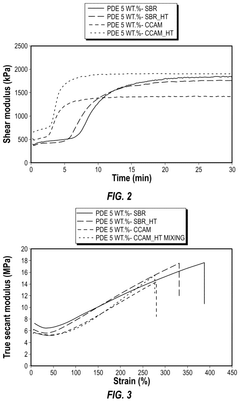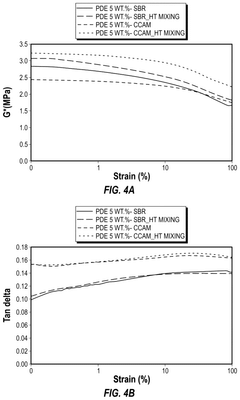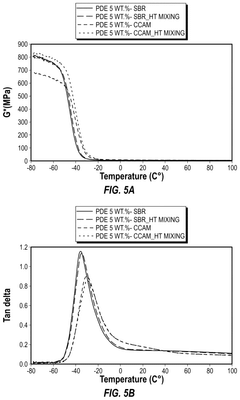How to Leverage Graphene Oxide in Enhancing Wear Resistance?
Graphene Oxide Wear Resistance Background
Graphene oxide (GO) has emerged as a revolutionary material in the field of wear resistance, attracting significant attention from researchers and industries alike. This two-dimensional carbon-based nanomaterial, derived from the oxidation of graphite, possesses unique properties that make it an excellent candidate for enhancing wear resistance in various applications.
The journey of graphene oxide in wear resistance applications began with the discovery of graphene in 2004 by Andre Geim and Konstantin Novoselov. Since then, researchers have been exploring ways to harness the exceptional mechanical, thermal, and electrical properties of graphene and its derivatives, including graphene oxide, for practical applications.
Graphene oxide's potential in wear resistance stems from its unique structure and properties. The material consists of a single layer of carbon atoms arranged in a hexagonal lattice, with oxygen-containing functional groups attached to its surface. This structure imparts GO with high mechanical strength, excellent thermal conductivity, and good chemical stability, all of which contribute to its wear-resistant properties.
The development of graphene oxide for wear resistance applications has been driven by the increasing demand for materials that can withstand extreme conditions and prolonged use. Traditional wear-resistant materials often fall short in challenging environments, leading to the search for innovative solutions. Graphene oxide has shown promise in addressing these limitations, offering improved wear resistance in various applications, from lubricants and coatings to composite materials.
As research in this field progresses, scientists and engineers are exploring different approaches to leverage graphene oxide's wear-resistant properties. These include incorporating GO into polymer matrices to create robust composites, using GO as an additive in lubricants to reduce friction and wear, and developing GO-based coatings for surface protection.
The goal of utilizing graphene oxide in wear resistance applications is multifaceted. Researchers aim to develop materials and coatings that can significantly extend the lifespan of components subjected to wear, reduce maintenance costs, and improve overall system efficiency. Additionally, there is a focus on creating environmentally friendly solutions that can replace traditional wear-resistant materials that may have negative environmental impacts.
As we delve deeper into the potential of graphene oxide in enhancing wear resistance, it becomes clear that this field is at the intersection of materials science, nanotechnology, and tribology. The ongoing research and development efforts are paving the way for innovative solutions that could revolutionize industries ranging from automotive and aerospace to manufacturing and energy production.
Market Demand Analysis
The market demand for graphene oxide in wear resistance applications has been steadily growing, driven by the increasing need for high-performance materials in various industries. Graphene oxide's exceptional mechanical properties, including its high strength and low friction coefficient, make it an attractive option for enhancing wear resistance in a wide range of products.
In the automotive sector, there is a significant demand for wear-resistant coatings and materials to improve the longevity of engine components, bearings, and other high-friction parts. The integration of graphene oxide into these applications has shown promising results in reducing wear and extending the lifespan of critical components, leading to increased interest from major automotive manufacturers.
The aerospace industry also presents a substantial market opportunity for graphene oxide-enhanced wear-resistant materials. With the constant push for lighter and more durable aircraft components, graphene oxide's ability to improve wear resistance while maintaining low weight is highly valued. This has led to increased research and development efforts in incorporating graphene oxide into aerospace materials and coatings.
In the industrial machinery and equipment sector, wear resistance is a crucial factor in maintaining operational efficiency and reducing maintenance costs. The potential of graphene oxide to enhance the durability of machine parts, cutting tools, and industrial coatings has generated significant interest among manufacturers and end-users alike.
The consumer electronics market has also shown growing demand for wear-resistant materials, particularly in the development of scratch-resistant screens and durable device casings. Graphene oxide's ability to improve the hardness and wear resistance of polymers and composites makes it an attractive option for manufacturers looking to enhance product durability and user experience.
The global market for wear-resistant materials is expected to continue its upward trajectory, with graphene oxide playing an increasingly important role. As research and development efforts intensify, and manufacturing processes become more scalable, the adoption of graphene oxide in wear-resistant applications is likely to accelerate across various industries.
However, challenges remain in terms of large-scale production, cost-effectiveness, and integration into existing manufacturing processes. Overcoming these hurdles will be crucial in fully realizing the market potential of graphene oxide in wear resistance applications. As technological advancements continue and production costs decrease, the market demand for graphene oxide-enhanced wear-resistant materials is expected to expand significantly in the coming years.
Current Challenges
Despite the promising potential of graphene oxide in enhancing wear resistance, several significant challenges currently hinder its widespread application and effectiveness. These challenges span across multiple domains, including material synthesis, integration, and performance optimization.
One of the primary obstacles is the difficulty in producing high-quality graphene oxide at scale. The synthesis process often results in inconsistent quality and properties, leading to variability in wear resistance performance. This inconsistency makes it challenging to achieve reliable and reproducible results in industrial applications.
Another critical challenge lies in the integration of graphene oxide into existing materials and coatings. Achieving uniform dispersion and strong interfacial bonding between graphene oxide and the host matrix remains a significant hurdle. Poor dispersion can lead to agglomeration, reducing the overall effectiveness of wear resistance enhancement.
The stability of graphene oxide under various environmental conditions poses another challenge. Exposure to heat, moisture, and certain chemicals can alter its structure and properties, potentially compromising its wear-resistant capabilities over time. This instability limits its applicability in harsh or dynamic environments where consistent performance is crucial.
Furthermore, the high production costs associated with graphene oxide present a significant barrier to its widespread adoption. The complex synthesis processes and the need for specialized equipment contribute to elevated expenses, making it less economically viable for many industrial applications compared to traditional wear-resistant materials.
The lack of standardized testing methods and performance metrics specifically tailored for graphene oxide-enhanced materials also impedes progress. This absence of standardization makes it difficult to compare different solutions and evaluate their effectiveness accurately, slowing down research and development efforts in the field.
Additionally, there are concerns regarding the potential environmental and health impacts of graphene oxide. The long-term effects of nanoparticle exposure and the environmental fate of graphene oxide-enhanced materials are not yet fully understood, raising regulatory and safety concerns that need to be addressed before widespread implementation.
Lastly, the optimization of graphene oxide's properties for specific wear resistance applications remains a challenge. Different wear scenarios require tailored solutions, and finding the right balance between graphene oxide concentration, functionalization, and integration method for each application demands extensive research and experimentation.
Existing Solutions
01 Graphene oxide coatings for improved wear resistance
Graphene oxide can be used as a coating material to enhance the wear resistance of various surfaces. The unique structure and properties of graphene oxide allow it to form a protective layer that reduces friction and prevents wear. These coatings can be applied to a wide range of materials, including metals, polymers, and ceramics, to improve their durability and longevity.- Graphene oxide coatings for improved wear resistance: Graphene oxide can be used as a coating material to enhance the wear resistance of various surfaces. The unique structure and properties of graphene oxide allow it to form a protective layer that reduces friction and prevents wear. These coatings can be applied to a wide range of materials, including metals, polymers, and ceramics, to improve their durability and longevity.
- Graphene oxide-based composites for enhanced wear resistance: Incorporating graphene oxide into composite materials can significantly improve their wear resistance properties. These composites combine the excellent mechanical and tribological properties of graphene oxide with the characteristics of the base material. The resulting composites exhibit enhanced hardness, toughness, and resistance to abrasion, making them suitable for applications in high-wear environments.
- Functionalized graphene oxide for tailored wear resistance: Functionalization of graphene oxide can be used to tailor its wear resistance properties for specific applications. By modifying the surface chemistry of graphene oxide, its interaction with the surrounding matrix or substrate can be optimized. This approach allows for the development of customized wear-resistant materials that can meet the demands of various industrial and technological applications.
- Graphene oxide-based lubricants for reduced wear: Graphene oxide can be utilized as an additive in lubricants to reduce wear in mechanical systems. The addition of graphene oxide to lubricating oils or greases can significantly improve their tribological properties, resulting in reduced friction and wear between moving parts. This application of graphene oxide can lead to increased efficiency and longevity of various mechanical components and systems.
- Graphene oxide-reinforced polymers for wear-resistant applications: Incorporating graphene oxide into polymer matrices can create wear-resistant materials suitable for various applications. The addition of graphene oxide can enhance the mechanical properties of polymers, including their hardness, tensile strength, and wear resistance. These reinforced polymers can be used in the production of durable components for industries such as automotive, aerospace, and consumer electronics.
02 Graphene oxide-based composites for enhanced wear resistance
Incorporating graphene oxide into composite materials can significantly improve their wear resistance properties. These composites combine the excellent mechanical and tribological properties of graphene oxide with the characteristics of the base material. The resulting composites exhibit enhanced hardness, toughness, and resistance to abrasion, making them suitable for applications in high-wear environments.Expand Specific Solutions03 Functionalized graphene oxide for tailored wear resistance
Functionalization of graphene oxide allows for the customization of its properties to suit specific wear resistance requirements. By modifying the surface chemistry of graphene oxide, its interaction with the surrounding matrix can be optimized, leading to improved adhesion and dispersion. This tailored approach enables the development of materials with enhanced wear resistance for targeted applications.Expand Specific Solutions04 Graphene oxide-reinforced lubricants for reduced wear
Graphene oxide can be used as an additive in lubricants to enhance their wear-reducing properties. The addition of graphene oxide to lubricating oils or greases can significantly reduce friction and wear between moving parts. This approach is particularly effective in improving the performance and longevity of mechanical systems subjected to high levels of wear.Expand Specific Solutions05 Graphene oxide-based thin films for wear-resistant coatings
Thin films composed of graphene oxide or graphene oxide-based materials can be deposited on surfaces to create wear-resistant coatings. These films provide excellent protection against wear and abrasion while maintaining a minimal thickness. The deposition techniques can be optimized to ensure uniform coverage and strong adhesion to the substrate, resulting in durable and effective wear-resistant surfaces.Expand Specific Solutions
Key Industry Players
The graphene oxide market for enhancing wear resistance is in a growth phase, with increasing research and industrial applications. The market size is expanding rapidly, driven by demand in sectors like automotive, aerospace, and electronics. Technologically, graphene oxide's wear resistance properties are still being explored and optimized. Companies like Goodyear Tire & Rubber Co. and Michelin are leveraging this technology in tire manufacturing, while research institutions such as Qingdao University and Harbin Institute of Technology are advancing fundamental understanding. The involvement of diverse players, from academic institutions to major corporations, indicates a maturing but not yet fully established technology landscape, with significant potential for further innovation and market expansion.
Société de Technologie Michelin
Goodyear Tire & Rubber Co.
Core Innovations
- A carbonate functionalized elastomer is mixed with reduced graphene oxide filler to create a rubber composition that improves wear resistance, rigidity, and energy dissipation, suitable for tire tread applications.
- A high wear-resistant graphene-modified natural rubber is developed by incorporating modified graphene oxide, carbon black, and other wear-resistant fillers, along with specific vulcanization accelerators and compatibilizers, to improve cross-linking, filler dispersibility, and interfacial bonding, thereby enhancing the wear resistance and mechanical properties.
Environmental Impact
The environmental impact of leveraging graphene oxide in enhancing wear resistance is a critical consideration in the development and application of this technology. Graphene oxide, while offering significant potential for improving material durability, also presents unique environmental challenges and opportunities throughout its lifecycle.
The production process of graphene oxide involves chemical oxidation of graphite, which can generate hazardous byproducts and consume significant energy. However, recent advancements in green synthesis methods have shown promise in reducing the environmental footprint of production. These eco-friendly approaches utilize renewable resources and minimize the use of harsh chemicals, potentially mitigating the negative environmental impacts associated with traditional manufacturing processes.
In terms of application, the use of graphene oxide in wear-resistant coatings and composites can lead to extended product lifespans and reduced material consumption. This longevity factor contributes to resource conservation and waste reduction, aligning with principles of sustainability and circular economy. Moreover, the enhanced durability of graphene oxide-infused materials may decrease the frequency of replacements and repairs, indirectly reducing the overall environmental impact of various industries.
The nanoscale nature of graphene oxide particles raises concerns about potential environmental release and ecotoxicological effects. Studies have shown that graphene oxide can interact with aquatic organisms and potentially accumulate in food chains. However, when properly incorporated into materials, the risk of environmental release is significantly reduced. Ongoing research is focused on understanding the long-term environmental fate and behavior of graphene oxide in different ecosystems.
End-of-life considerations for graphene oxide-enhanced products are an important aspect of their environmental impact assessment. While the material's durability is beneficial during use, it may pose challenges for recycling and disposal. Developing effective recycling methods for graphene oxide-containing materials is crucial to ensure a closed-loop system and minimize environmental burden.
The potential for graphene oxide to enable more efficient and environmentally friendly industrial processes should not be overlooked. Its application in wear-resistant coatings for industrial equipment can lead to reduced energy consumption and improved operational efficiency, indirectly contributing to lower greenhouse gas emissions and resource utilization.
As research in this field progresses, life cycle assessments (LCAs) are becoming increasingly important to comprehensively evaluate the environmental impacts of graphene oxide applications in wear resistance. These assessments consider all stages from raw material extraction to end-of-life management, providing valuable insights for sustainable development and implementation of this technology.
Scalability and Cost
The scalability and cost considerations of leveraging graphene oxide (GO) in enhancing wear resistance are crucial factors in determining its widespread adoption and commercial viability. The production of high-quality GO at industrial scales remains a significant challenge, primarily due to the complexity of the synthesis process and the need for precise control over the oxidation level and sheet size distribution.
Current manufacturing methods, such as the modified Hummers method, face limitations in terms of scalability and environmental impact. The use of strong oxidizing agents and acids in these processes not only raises safety concerns but also contributes to higher production costs. Additionally, the purification and exfoliation steps required to obtain high-quality GO sheets are time-consuming and energy-intensive, further impacting the overall cost-effectiveness of GO production.
To address these challenges, researchers are exploring alternative synthesis routes that could potentially improve scalability and reduce costs. One promising approach involves the use of electrochemical exfoliation techniques, which offer the potential for continuous production and reduced chemical usage. However, these methods are still in the early stages of development and require further optimization to achieve the desired GO quality and yield at industrial scales.
The cost of GO production is also influenced by the raw material source. While graphite is relatively abundant, the demand for high-purity graphite suitable for GO synthesis can drive up costs. Efforts to utilize lower-grade graphite sources or recycled carbon materials could help mitigate this issue, but may require additional processing steps to achieve the desired GO properties.
In terms of application, the integration of GO into wear-resistant coatings or composite materials presents its own set of scalability challenges. Ensuring uniform dispersion of GO sheets within the matrix material and maintaining consistent performance across large surface areas are critical factors that need to be addressed for successful industrial implementation.
Despite these challenges, the potential benefits of GO in enhancing wear resistance continue to drive research and development efforts. As production techniques improve and economies of scale are realized, the cost of GO is expected to decrease, making it more competitive with existing wear-resistant materials. However, achieving a balance between performance, scalability, and cost-effectiveness remains a key focus for researchers and industry stakeholders alike.



